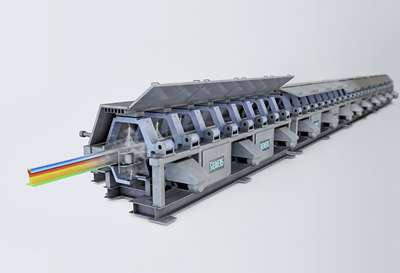Rail production that is fast and energy efficient

A new hardening technology used in the production of heavy duty rails saves energy and increases productivity. The Siemens' IdRHa+technology will now be used commercially for the first time in a production line operated by the Chinese steel manufacturer Baotou at its plant in Inner Mongolia. The IdRHa+ (Injector Dual-phase Rail Hardening) system for hardening the rail head makes it possible to produce train rails that can tolerate higher compressive stress and are more fatigue and wear resistant. Siemens developed the technology in cooperation with the Italian Technical CenterCentro Sviluppo Materiali S.p.A.
Because rail transportation of freight, as well as people, is environmentally friendly and relatively inexpensive, rail networks around the world are continuously being expanded. As a result, the rails themselves have to be able to handle increasing loads. Trains are becoming faster and heavier and their numbers are increasing. To meet the associated challenges, a heat treatment is used to harden the finish-rolled rails. One particular challenge for this type of process is finding a way to obtain consistent metallurgical structure, and therefore mechanical features, over the full length of each rolled rail and processed steel grade.
Siemens' new rail hardening technology produces heavy duty train rails in one fast and energy-saving inline process step. Hardening takes place directly inline as part of the rolling process. The IdRHa+ system was developed on a pilot line and will now be installed on a rail rolling line that annually produces 400,000 tons of rails of different sizes and cross sections. The new system makes it possible to cool the rails with water, air, or a combination of the two. Special software simulates the cooling strategy on the basis of the material qualities, rail geometries and process parameters involved. As a result, upstream tests can be eliminated, the run-up time for a new product can be reduced, and nominal production capacity can be reached more quickly. This precisely controlled process ensures that quality remains consistently high over the entire length of the rails - which can measure up to 104 meters - even when asymmetrical rail geometries are involved.
The new inline heat treatment system at the Baotou steel mill is scheduled to go into service in 2014. Subsequently, Siemens will work with the customer to further optimize the rolling line.
Provided by Siemens
















